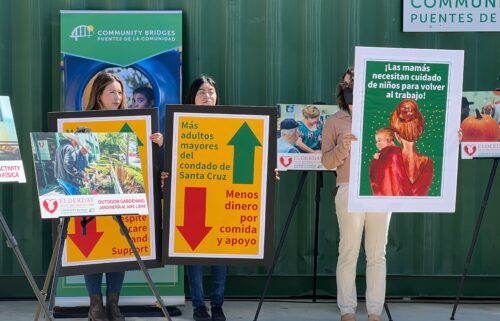The Western Monarch Butterfly population sees a significant decrease
CENTRAL COAST, Calif. (KION-TV) -- Western Monarch Butterflies have reached record low numbers along the Central Coast, according to the U.S. Fish and Wildlife Service.
The 28th annual Western Monarch Count reported a peak population of 9,119 monarchs this year, being the second lowest overwintering population recorded since tracking began in 1997, according to the Xerces Society, a science-based group that specializes in invertebrate conservation.
“The western monarch butterfly is one of the most recognizable species in California, and we are greatly distressed by the results of this year's Western Monarch Count," said Randy Widera, Director of Programs for California State Parks Foundation. "California State Parks Foundation has worked hard to protect and conserve monarch groves in state parks... we also must see monarchs listed as a Threatened species under the Endangered Species Act.”
Last November, the California State Parks Foundation released data regarding the declining monarch numbers along the coast in an article titled, "New Analysis: The Impact of Climate Change on the Western Monarch Butterfly."
They named two of top four overwintering sites for western monarchs being along the Central Coast in local California state parks: Lighthouse Field State Beach in Santa Cruz being the top with 1,406 monarchs, and Natural Bridges State Beach following with 1,400 monarchs.
"Millions of western monarchs used to return to California every year, but the population has plummeted in recent decades, and fewer than 2,000 butterflies were counted in California in 2020," wrote California State Parks in the report. "Numerous factors have contributed to this decline, including habitat loss, pesticides, and disease."
The report states that although there was an increase to almost 233,000 butterflies counted in 2023–2024, the gain is increasingly threatened by climate change, which includes prolonged drought and intensifying storms.
“A lot of people care about monarchs. Voluntary efforts like pollinator gardens and restoring habitat are probably a reason they aren’t in worse shape,” said Isis Howard, coordinator of the Western Monarch Count with the Xerces Society. “However, these actions are not enough. To help monarchs recover, we need to work at a larger scale and address widespread issues like pesticide contamination and climate change that are beyond what voluntary efforts have been able to achieve.”
Both the Xerces Society and the California State Parks agree that listing the monarch butterfly as a "threatened species" under the U.S. Endangered Species Act is "crucial."
They say that the U.S. Fish and Wildlife Service predicts a greater than 95% chance of extinction for western monarchs by 2080. "The proposed 'threatened' listing emphasizes the protection of overwintering groves—critical sites where monarchs return each year," wrote the the Xerces Society in a statement Thursday.
For people looking to add their name to the California State Parks Foundation petition to support the classification of the Western Monarch Butterfly as a threatened species under the U.S. Endangered Species Act, visit: http://www.calparks.org/monarchthreat.




